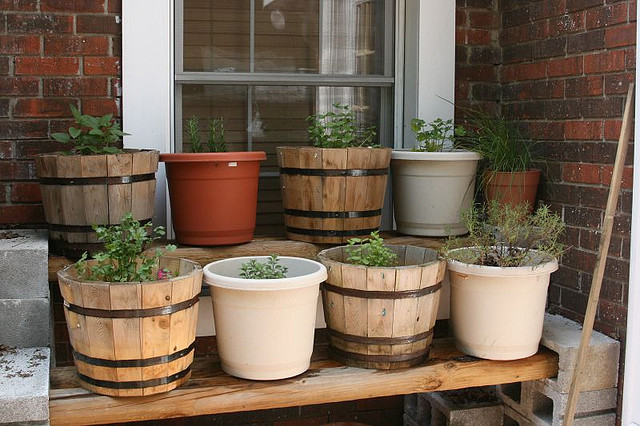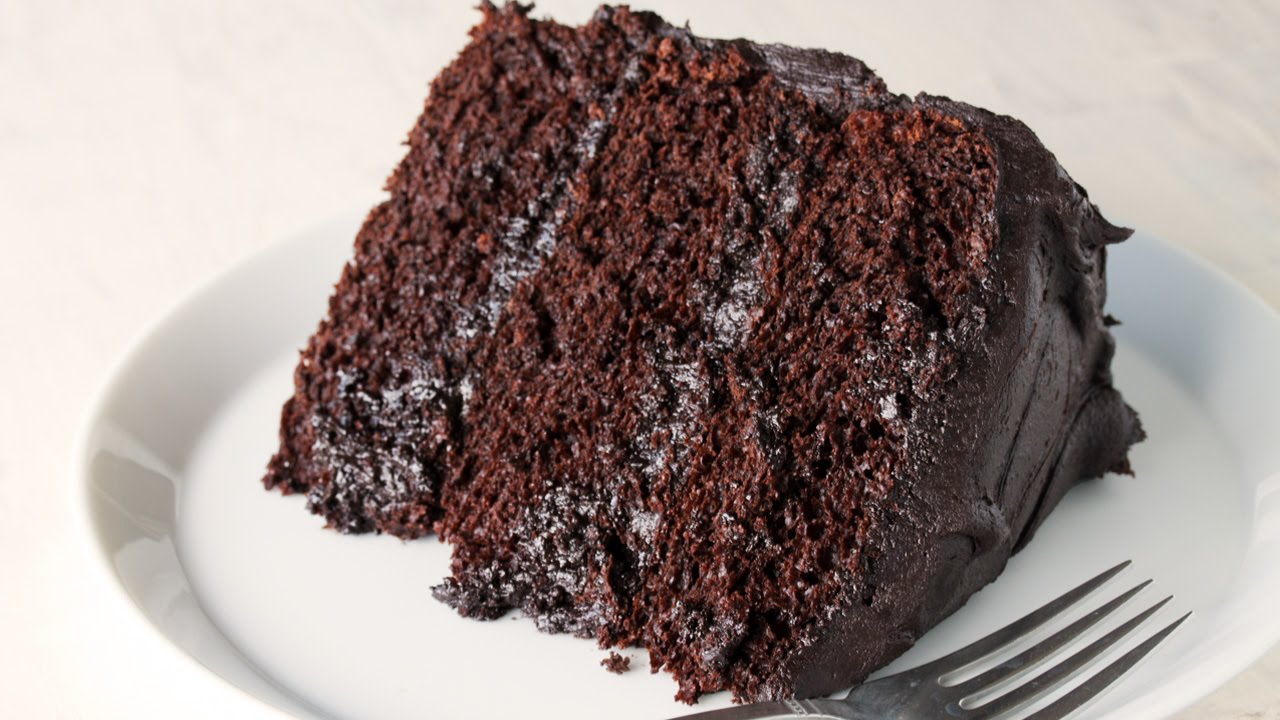
5 Fundamental Culinary Plants for the Nice Yard
The Witch's Garden
Throughout time, witches have been known to have extensive gardens full of herbs, vegetables, flowers, and trees. Stories of witches gathering herbs in the moonlight, tilling the land in the spring, and speaking to the trees abound in folklore and fairy tales. Witches are known to use herbs in their magical endeavors, as well as medicinally to heal ailments of many different kinds. Back in the day, before doctors were prevalent, when one had an illness or ailment of some kind one would travel to the outskirts of town (sometimes even up into the mountains) to find the local witch and acquire an herbal cure.
These men and women weren't always called witches. Often they were called things like cunningfolk, wisemen and wisewomen, healers, herbalists, shamans, medicine men, witch doctors, grannies, midwives, and more. In addition to using herbs for healing and magic, witches use herbs in their cooking. In this way, the herbs can be both medicinal and magickal when eaten. Here are the five essential culinary herbs that every witch should try to grow in his or her garden. Keep in mind this depends on your climate, but most of these herbs can be successfully grown in pots in warm weather.
1. Rosemary
Rosemary (Rosmarinus officinalis) is native to the Mediterranean region of Europe and parts of Asia and is a woody perennial. It has evergreen leaves and will produce white, blue, and pink flowers. You can grow it successfully in a pot, and it does well in hot sun and warm weather. It can also stand colder weather, as well and is considered a sort of evergreen plant. It requires little watering and so it is a low maintenance herb. If you live in a warm climate, rosemary will grow easily year-round for you in the garden. If you live in a fairly cold climate year-round, you might want to keep it in a pot and bring it in during the coldest weather. They can grow up to five feet tall and are truly a very hardy herb to grow in the witch's garden.
Rosemary is one of those all-purpose herbs that can be used for healing and magical needs. It is said to help improve one's memory and cognition when taken medicinally. Rosemary has been used to help stimulate the scalp and promote hair growth and healthy hair when infused into oil and rubbed on the scalp. Magically, it's used to purify the air when made into incense or a smudge bundle. It is also used in love spells - the leaves and sprigs can be put into love sachets, bottles, and used in food as an aphrodisiac. Rosemary also has protective properties and can be placed under a child's crib to protect from malevolent spirits and faeries; it can also be worn to ward off evil and sickness. Don't forget that rosemary can be used in many dishes as medicine or as magick to induce properties of love, healing, and protection.
2. Basil
Another one of my all-time favorite culinary herbs with so many purposes. Basil (Ocimum basilicum) is native to India but now grows in the Mediterranean and all over the world in gardens. It is known for its use in Italian dishes, particularly. Basil is also called Saint Joseph's Wort and the King of Herbs. Basil is an annual herb and grows well in a pot as well as in raised garden beds. It doesn't need a lot of watering but regular pinching of the new growth is recommended to keep it from growing too "woody" or "leggy". Grow basil near your tomato plants to deter pests. There are many varieties of basil, the most common known as sweet basil. The leaves can be added to salads, Italian pasta dishes, caprese, fruit salads, and many other dishes. Its culinary uses are wide-ranging.
In addition to its culinary use, basil has medicinal and magical properties. Basil has more than one essential vitamin, including Vitamin K and Vitamin C. It is said to have anti-inflammatory properties. The aroma of basil is due to its many essential oils. Pick a leaf and rub it gently between your fingers, then breathe the scent in and enjoy! The scent is uplifting and energizing. Basil's magical properties include (but aren't limited to): money-drawing/luck and love.
3. Mint
Every witch should grow mint (Mentha) in her garden. There are various kinds including chocolate mint, peppermint, pineapple mint, and spearmint (just to name a few). Mint is native to a majority of the continents worldwide and is very easy to grow. It is a perennial and is quite hearty. Mint sends out shoots and will take over a garden if it's left to its own devices. For this reason, it's best to keep mint in pots or separate containers from the rest of your plants. Mint is a sweet, vibrant green herb that can be used in the kitchen in many different meals. It adds a sweet flavor to desserts and is used often in Mediterranean and Indian cuisine. Throw a couple leaves on the top or side of meals as a pretty garnish.
Besides its many culinary uses, mint also has multiple magical and medicinal uses. Peppermint tea is not only tasty and relaxing, it can also be drank to calm an upset stomach. Mint helps with digestion, so a cup of fresh mint tea after a heavy meal is just the ticket! Some other medicinal uses for mint include treatment for irritable bowel syndrome and use in aromatherapy to relieve nausea. Really and truly the mint is all about relieving stomach and intestinal ailments. Magically, mint has a number of purposes, just as the other herbs mentioned in this article, and can be used to draw money, to heal, to ward off illness, to draw love, lust, and to ward off evil. According to Cunningham's Encyclopedia of Magical Herbs, mint on the "altar will call good spirits to be present and aid in magic."
4. Sage
Sage (Salvia officinalis) is a popular culinary herb and can easily be grown in the witch's garden. It is a perennial and is native to the Mediterranean. It is a subset of the mint family and can be grown easily in a garden or in a pot. Sage has gray-green leaves and is a shrub, if not trimmed regularly it can become "woody". Its blooms are typically a delicate purple or blue shade. Sage has been used since ancient times for various purposes and are documented widely. There are different types of sage. Sage is easy to maintain as it needs low to a regular amount of water and a healthy amount of sun. For culinary purposes, sage is used during the holidays as a stuffer for poultry (turkey, chicken, goose) and used in dressing, and is an essential herb in many Italian, Balkan, and British dishes.
Medicinally, sage has been used for hundreds of years for various illnesses. It's been used as an anti-inflammatory, a diuretic, a tonic, and more popularly as a part of the Four Thieves Vinegar (which was a vinegar and herbal concoction thought to keep away the Plague). It was also used for snakebites, palsy, and fever. Sage is similar to rosemary in that it can also help improve cognition and memory. Its magical properties include increasing fertility, warding off evil, immortality, increasing abundance, and making wishes. Put the leaves in poppets, spell bags, ointments, and more!
5. Lemon Balm
Lemon Balm (Melissa officinalis) is part of the mint family and is a perennial herb. It grows native to southern parts of Europe, as well as the Mediterranean and parts of Asia. As its name suggests, it has a lemony scent and flavor. Growing it in Florida, I've found that it does best with part sun / part shade and in a pot with compost added to the soil. If you live elsewhere in a cooler climate, your plant may need more sun but you'll have to move it around to see where it does best in your yard or garden. Lemon balm's official name is Melissa officinalis, as it is said to attract bees when it flowers, though it is not the same as Bee balm. Melissa was a Greek Goddess associated with bees and that is how this plant got its name. Keep it in a separate pot, as it will overtake your garden just like mint!
Lemon balm can be used in food to give it a lemon flavoring and is great for fish dishes. It's also used medicinally as a tea to help calm fluttering or anxious nerves. It has a very mild sedative effect and can be drank before bed to help promote sleep. Lemon balm also helps with digestive problems, just as its cousin the mint plant does. Drink it in combination with peppermint for a nice complimenting herbal tea. Magically, lemon balm can be used in bee magick, to honor the goddesses Melissa and Diana, as an aphrodisiac, as an anti-depressant and as a complimentary herb in dream pillows and sachets.











